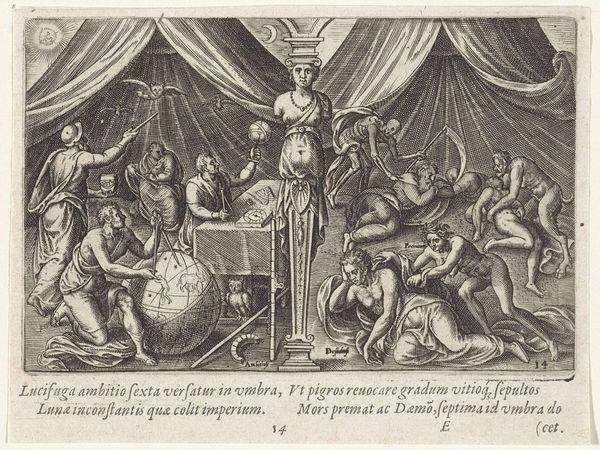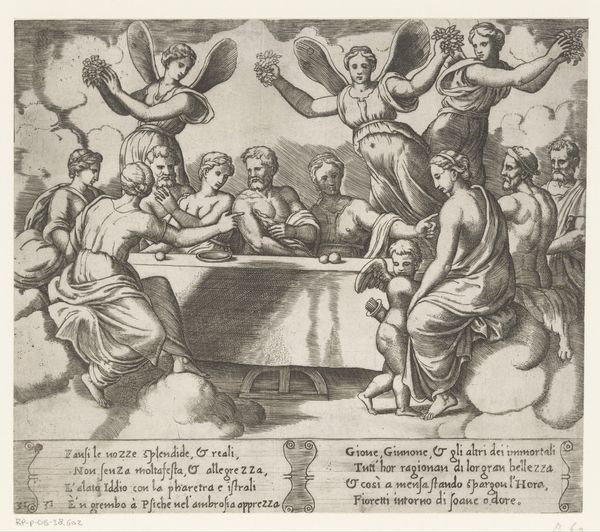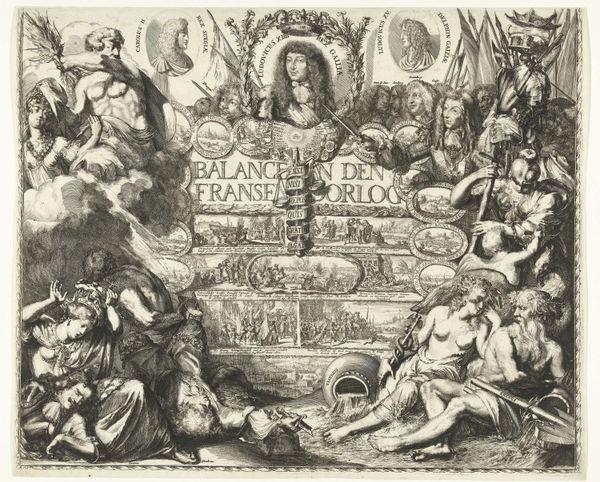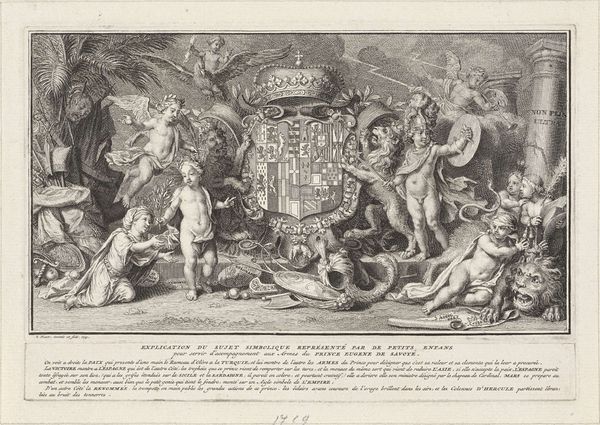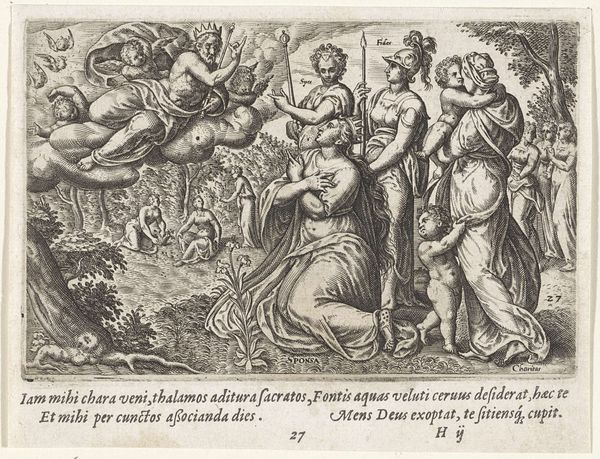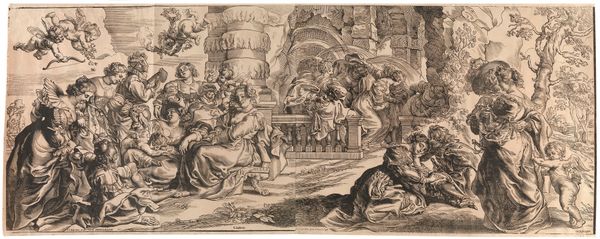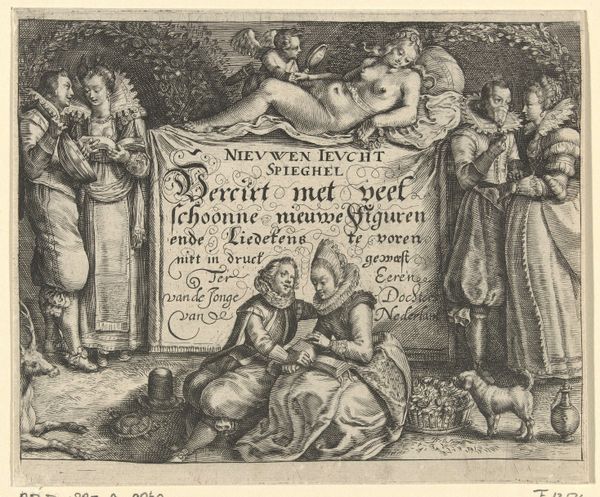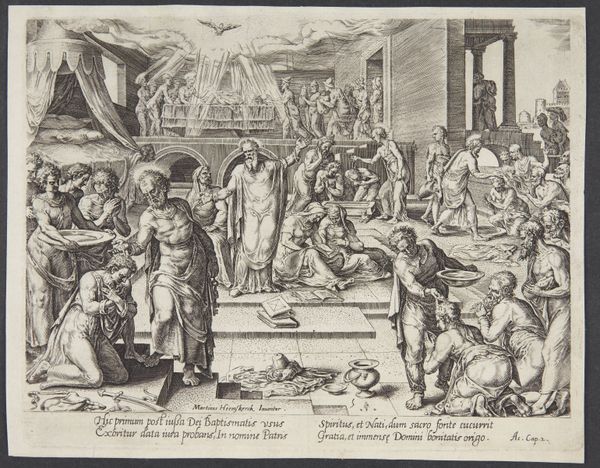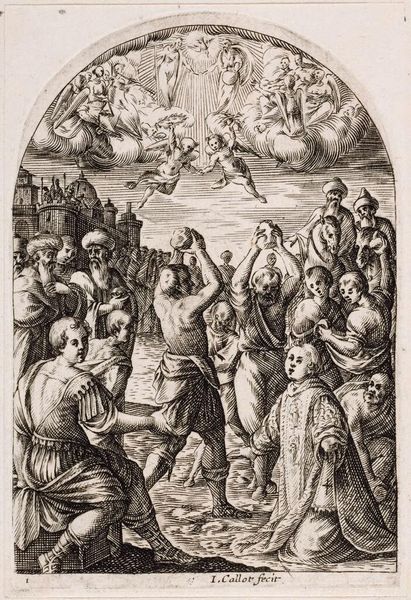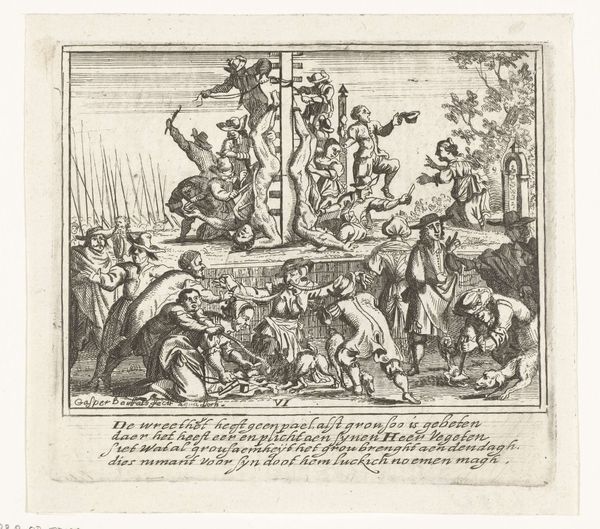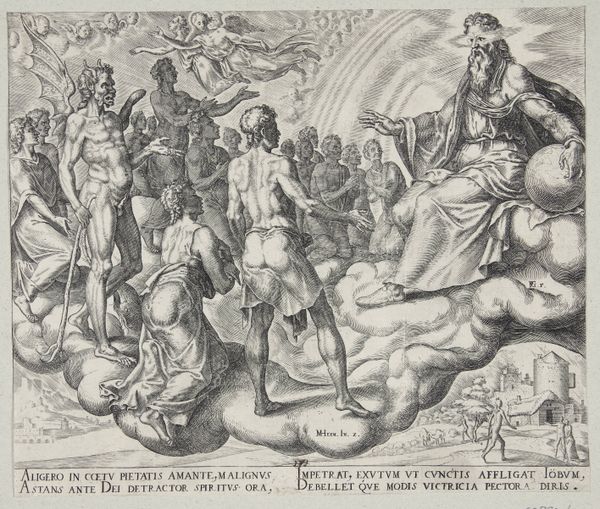
print, engraving
#
portrait
# print
#
figuration
#
group-portraits
#
line
#
history-painting
#
northern-renaissance
#
engraving
Dimensions: height 92 mm, width 140 mm
Copyright: Rijks Museum: Open Domain
Curator: This is "Bruid in de hemel," or "Bride in Heaven," an engraving from 1574 by Wierix, currently residing in the Rijksmuseum. It feels intensely symbolic to me, with its ascending tiers of figures, earthly to divine. What stands out to you initially? Editor: It's striking how crowded the composition is! All these figures packed into a small space create a real sense of drama. The muscular figures at the bottom really grab my attention… What do you make of their role? Curator: Those figures, seemingly representing prophets or lawgivers holding tablets and texts, anchor the work in earthly authority, almost patriarchal structures, don't you think? They’re gazing up at a very traditional vision of the Christian Trinity. It's fascinating to consider this image within the religious and political turmoil of the Northern Renaissance, the artist showing faith using very male centric signifiers. Editor: So, it’s not just a simple religious scene, but a statement on power and belief within a specific historical context? Curator: Precisely! Wierix positions these figures and symbols within a carefully constructed hierarchy, one that reinforces existing social orders while also perhaps speaking to a yearning for spiritual transcendence during a time of great upheaval. Editor: It's interesting to think about the 'bride' as perhaps representing the soul, striving for union with the divine. I guess what is most interesting, is who is being excluded from such notions. Curator: Absolutely! Who gets to ascend, who defines 'divine', and what systems of power are upheld in that ascent? It really encourages a closer inspection of art's potential, even pieces rooted in religion and traditional symbols, to reflect social change and challenge dominant power structures. Editor: Thinking about the artwork as a snapshot of Renaissance values really adds another layer of depth. Curator: Exactly. Examining these layers helps us to understand not just art history, but ourselves, and the ongoing project of deconstructing narratives that limit inclusivity and equity.
Comments
No comments
Be the first to comment and join the conversation on the ultimate creative platform.
